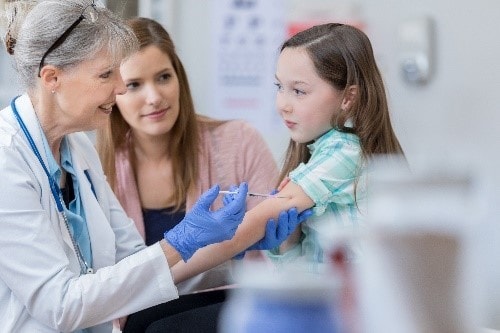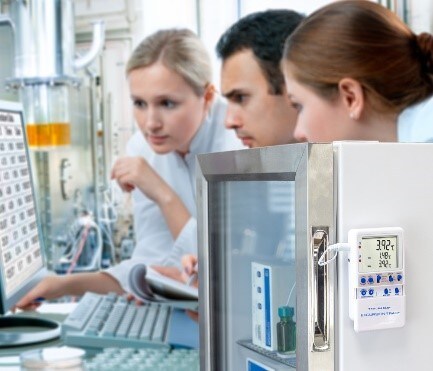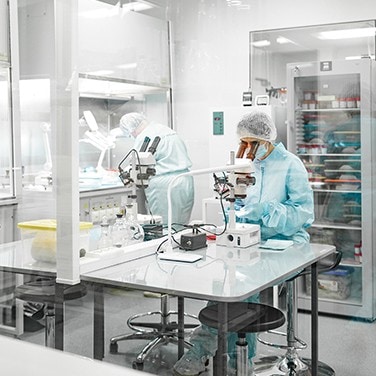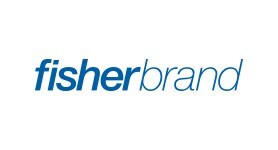Vaccine Development: Fighting Infectious Diseases

Vaccines have played a huge role in shaping modern society. The notion of acquired immunity was discovered in ancient China centuries ago, but the modern concept of vaccination was born in the 18th century when English scientist Edward Jenner used cowpox infections to protect against smallpox.
Today, the global vaccine industry is worth over 50 billion USD.
Vaccine Development
The concept behind vaccines is simple: a weakened pathogen is used to trigger an immune response that helps fight a disease to which a person is exposed. Due to current immunisation practices, polio, smallpox and other devastating diseases that once obliterated communities are nearly eradicated. Many others like measles and mumps can also be controlled.
Vaccine development begins with identifying the disease-causing agent. Then scientists can research and develop live attenuated or inactivated agents from which to produce a vaccine. Genetic engineering technologies are also used to develop modified versions of the agents.
While the antigens in vaccine formulations evoke the immune response, vaccines would not work without adjuvants, emulsifiers, and stabilisers.
Quality Control and Regulation
As biological products, vaccines require strict quality control and quality assurance practices to ensure their safety. Global guidelines provide standards, and various in vitro and in vivo tests are used to measure the potency of the finished products.
One critical and regulated aspect is constant and accurate temperature monitoring. Data logging thermometers, like Fisherbrand Traceable products, can help ensure that optimal temperatures are maintained through the entire vaccine creation and production cycle.
Pre-Clinical and Clinical Trials
Before a vaccine can be certified for human use, it needs to be validated through several rounds of pre-clinical and clinical trials:
Pre-Clinical Trial: After a vaccine is developed, it is tested with tissue culture and animal models to determine safety and immunogenicity. These studies help researchers understand the cellular responses they can expect from the candidate vaccine and adjust formulations and dosages for the next round of tests.
Clinical Trial I: Having satisfied any pre-clinical trials, the potential vaccine is ready to be tested on a small group of healthy people. A controlled challenge test, where subjects are exposed to the disease to determine vaccine effectiveness, might also occur at this stage.
Clinical Trial II: This trial is expanded to a larger group that includes at-risk individuals. Tests are randomised and often include a control or placebo group for comparison.
Clinical Trial III: After successful completion of the first two rounds of clinical trials, the vaccine is tested on a group of thousands of individuals. The vaccine is validated with this larger group, as some rare side effects may not be detected in smaller groups. For example, an adverse event that occurs only once in 10,000 people may only surface after a substantial number of people have been exposed to the vaccine.
Clinical Trial IV: Manufacturers may continue to perform other tests for safety, efficacy, and other potential uses for the vaccine after it has been approved for distribution and use.
Licensing: Regulatory authorities independently verify clinical trial I, II, and III test results before issuing a license for the products to be sold and used.
Storage and Transport

Vaccines will naturally biodegrade over time and can lose efficacy when exposed to extreme heat or cold. Poor or inadequate storage and transport conditions may violate the vaccine’s license or cause the vaccine to fail. Cold chain temperature ranges for vaccines are typically between +2˚C and +8˚C.
Today, advanced instrumentation can help you monitor and maintain temperatures for safety and traceability during storage and transport. FisherbrandTM TraceableLIVETM cloud-based data loggers or FisherbrandTM Excursion-Trac USB data loggers provide the complete temperature recording needed to validate proper vaccine storage. For vaccine transport, use FisherbrandTM TraceableGOTM data loggers to document that vaccine temperatures are appropriate and uncompromised.
All Fisherbrand Traceable products include a two-year, NIST-accredited calibration certificate to help you to comply with the requirements and recommendations of national and/or international regulatory bodies.
Summary
Immunisation is one of modern medicine’s greatest success stories. It can prevent sickness and death and also supports global education and economic development.
Content provided by:




